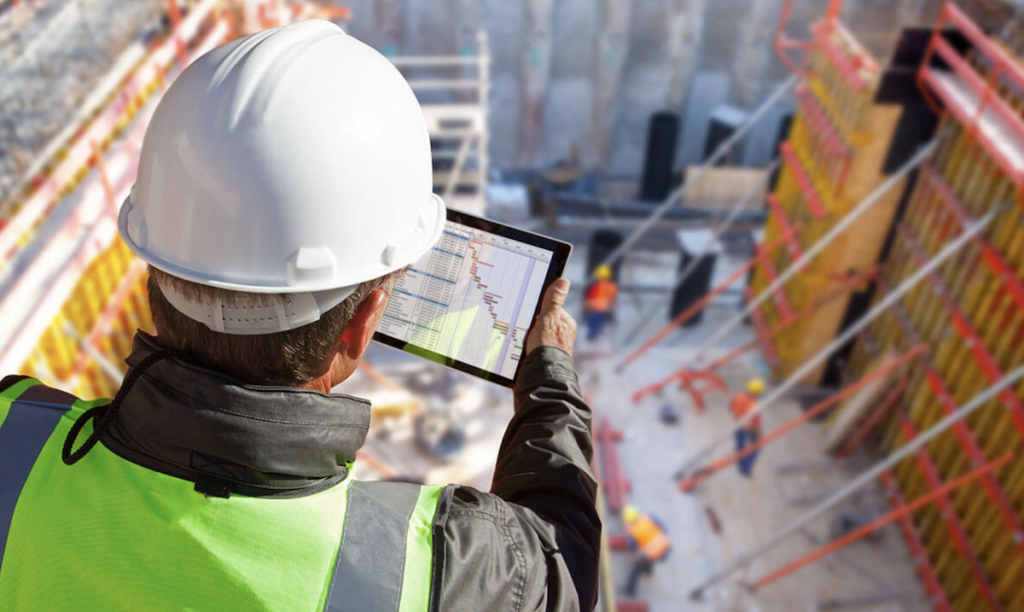The construction sector is being impacted by the Internet of Things. The advancement of digital technologies helps to connect venues, improve safety, reduce accidents, and improve working processes.
Building sites are becoming smarter as information from IoT devices is analyzed, resulting in increased efficiency.
Several industries have already benefited from the Internet of Things, and manufacturing is the next to be affected.
It’s a good time: the sector has seen an increase in operational complications, and building businesses have been expanding in size and increasing their operations regionally and in the sorts of structures they handle since the beginning of the present decade.
What You Have to Understand About IoT in the Construction Business is as Follows
In the construction business, researchers have been seeking ways to efficiently incorporate IoT technology. They feel it is not something that occurs overnight. It will take a little time for the building industry to profit from technological advancements.
It could take years, if not decades. We are, in fact, not that far from the truth.
Supervisors rarely stroll around the job site to look at the personnel and equipment; rather, cameras and monitors handle the job. The cloud is currently used to store designs, files, and other important data.
IoT in the Manufacturing Sector
The IoT in building entails the employment of traffic cone devices that are put on working sites or carried by workers.
IoT systems for construction can gather information on activities, productivity, and circumstances on the job site and transmit it to a centralized interface, where it can be evaluated to help make choices.
Computers and tablets have generally been the most common internet-connected gadgets. However, a wide range of devices can now be replaced with a chip (similar to a Sim), resulting in the phrase “Internet of Things.”
It is feasible to link computers like heartbeat sensor bracelets, temperature monitoring, and vibration sensors to a database, allowing many more characteristics of the locations to be tracked in real-time. And this has far-reaching consequences in terms of safety, protection, production, and cost savings.
IoT Technology And The Future Of The Construction Zone
Hundreds of construction enterprises have already started adopting IoT in some way or the other. Here are a few examples of how technologies can be used:
Improving the Safety of Working Conditions
Portable IoT devices have a lot of potential for increasing safety on construction sites. If every employee on a work site wears a bracelet or wears a clip-on gadget, information on their motions and activities can be utilized to spot any potentially dangerous behavior.
Increase Resource Management
How many days are wasted looking for supplies on construction sites? Idle engines consume how many units of fuel? How much time do workers go unemployed when they can be helping with other jobs?
The use of Connected systems on building sites can significantly enhance resource utilization. You can rapidly geolocate all equipment, personnel, and materials if they are all stored online through a chip. There are considerable cost and time benefits.
Improved Reporting and Upkeep
IoT devices may continuously give back data about circumstances in both finished and under-construction facilities thanks to sensors strewn throughout a worksite. Sensors can detect odd disturbances on a machine or equipment, indicating that it has to be repaired.
They can detect changes in humidity, alerting your assessment teams to potential damp hazards. Sensors can assist prevent accidents.
Builders and Technology Industry Leaders Collaborate
There are many “how” questions about technology, and the easiest approach to answer them is to provide the essential knowledge so that construction crews, architects, program managers, and consumers can understand how they may profit from certain technological progress.
Apart from that, suppliers must be aware of the potential for opposition and the public attitudes that will enable them to adjust to innovation.
Furthermore, preparing how to adopt a new technology may assist individuals in the construction business in making better use of the technologies available. Similarly, by recognizing issues, they will be able to devise a strategy that will enable them to utilize data insights.
If done correctly, one might look forward to a better world. These are just a few of the methods that automation can help to make a worksite safe.

